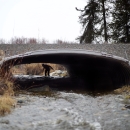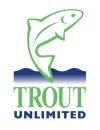States
UtahThe project to remove a privately owned concrete dam on the Price River has been successfully completed. This 12-foot dam, which was no longer needed for water diversion, has been identified as a total barrier to fish and wildlife passage. It also posed challenges for recreational boating and created safety issues for anglers, both of which are important economic drivers for the local community.
As part of the project, the dam was lowered by 9 feet, with the final 3 feet buried in a series of rocky riffles. This restoration has opened up 0.7 miles of upstream rearing habitat for state priority species, including Bluehead Suckers and Colorado Cutthroat trout. The project is a key component of a long-term effort to restore connectivity along the entire Price River from its confluence with the Colorado River to Schofield Reservoir, located 20 miles upstream.
In addition to benefiting fish and aquatic wildlife, this project has provided jobs and enhanced recreational opportunities, contributing to the stimulation and diversification of the local economy
Quick Facts:
| Project Status | Complete |
| Location | UT, Carbon County |
| NFPP Project Funding | $1,500,000 |
| Restoration Techniques | Dam Removal |
| Accomplishments | 1.3 Stream Miles Reconnected |
| Project Partner Lead | Trout Unlimited |
| Primary Species Benefited | Flannelmouth Sucker |
The National Fish Passage Program combines technical expertise with a track record of success.
Implemented primarily through the Service's Fish and Wildlife Conservation Offices, the National Fish Passage Program provides financial and technical assistance to partners across the country. Since 1999, the program has worked with over 2,000 local communities, Tribes, and private landowners to remove or bypass over 3,400 barriers to fish passage fish passage
Fish passage is the ability of fish or other aquatic species to move freely throughout their life to find food, reproduce, and complete their natural migration cycles. Millions of barriers to fish passage across the country are fragmenting habitat and leading to species declines. The U.S. Fish and Wildlife Service's National Fish Passage Program is working to reconnect watersheds to benefit both wildlife and people.
Learn more about fish passage and reopen access to over 61,000 miles of upstream habitat for fish and other animals. Staff have expertise in fish migration and biology as well as financial, engineering, and planning assistance to communities, Tribes, and landowners to help them remove barriers and restore rivers for the benefit both fish and people.
Fish passage project proposals can be initiated by any individual, organization, government, or agency. However, proposals must be submitted and completed in cooperation with a Fish and Wildlife Conservation Office. (Please note that fish passage projects being used for federal or state compensatory mitigation or required by existing federal or state regulatory programs are not eligible for funding through the National Fish Passage Program.)
CONTACT A FISH PASSAGE COORDINATOR IN YOUR AREA TO GET STARTED.



